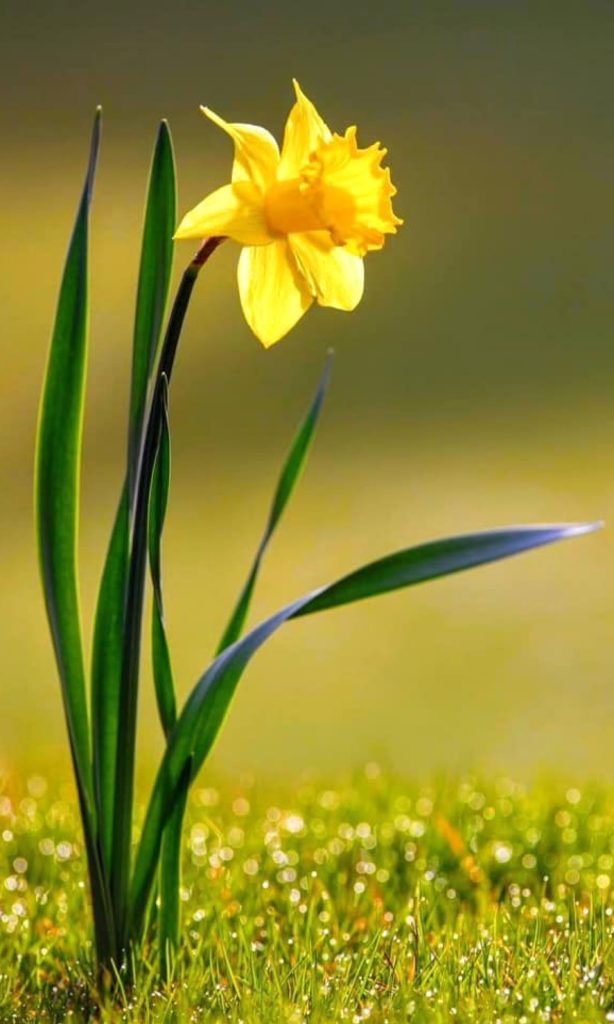
♭♯♭ Seven Daffodils ♭♯♭
Amidst many daffodils blooming with their heads held low, I noticed a daffodil blooming with a straight, upward gaze. They seem to be declaring a fresh start, signaling the end of the COVID-19 pandemic this year. The Japanese narcissus, which bloomed continuously since the end of last year, has passed its peak, and now the daffodils are in full swing. Both types of narcissus are said to originate from the Mediterranean coast of Europe, but the Japanese narcissus has taken root in Japan since ancient times and has been named accordingly. In Europe, when people say “narcissus,” they usually refer to daffodils, which are also depicted in ancient Greek wall paintings. The scientific name of narcissus is Narcissus, which is famously derived from Greek mythology. The legend says that Narcissus, a young man, fell in love with his own reflection in a pool and turned into a narcissus flower, gazing at his own reflection, hence why all narcissus flowers seem to hold their heads low.
首をもたげて咲くラッパスイセンが多い中、キリリと上を向いて咲くラッパスイセンが目に止まりました。今年こそコロナ禍も終焉し、再出発を宣言しているかの様です。昨年暮から咲き続けたニホンスイセンも盛りを過ぎ、今はラッパスイセンが勢いづいています。どちらの水仙も原産地はヨーロッパの地中海沿岸の様ですが、ニホンスイセンは早くから日本に根付いた様でその名が付きました。ヨーロッパでは、水仙と言えばラッパスイセンを指す様で、古代ギリシャ時代の壁画にも描かれています。水仙の学名はNarcissus(ナルシス)ですが、これはギリシャ神話から来ていると言うのはつとに有名です。ナルシス青年が池に映る自分自身の姿を見て恋焦がれ、そのまま自分の姿を覗き込むように水仙(スイセン)の花に姿を変えたと言う言い伝えです。だからどの水仙も首をもたげているらしいです。
